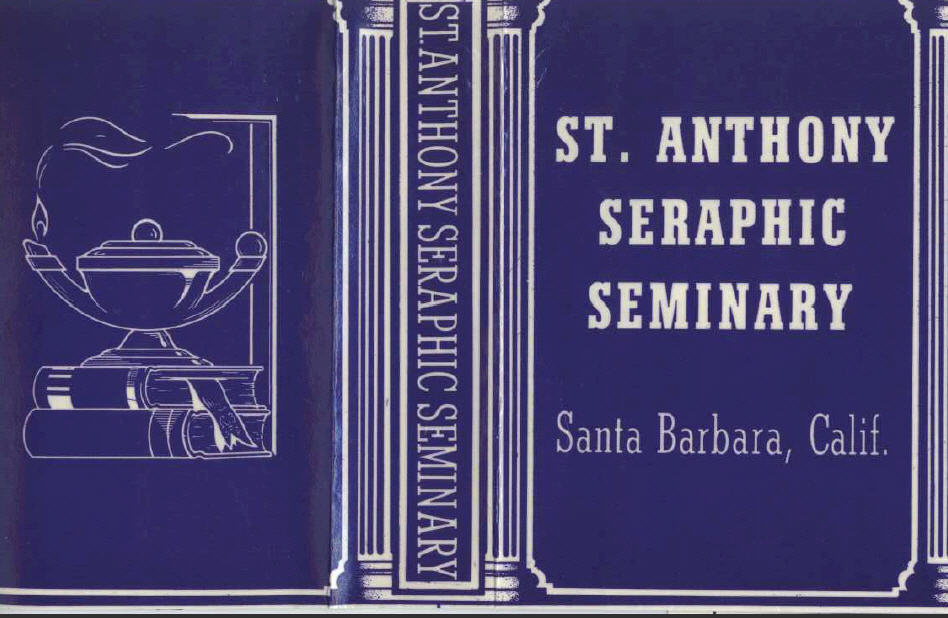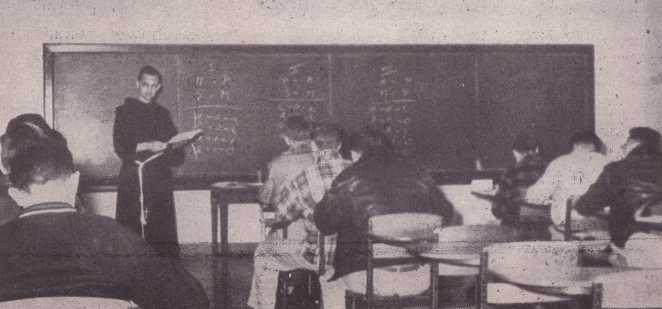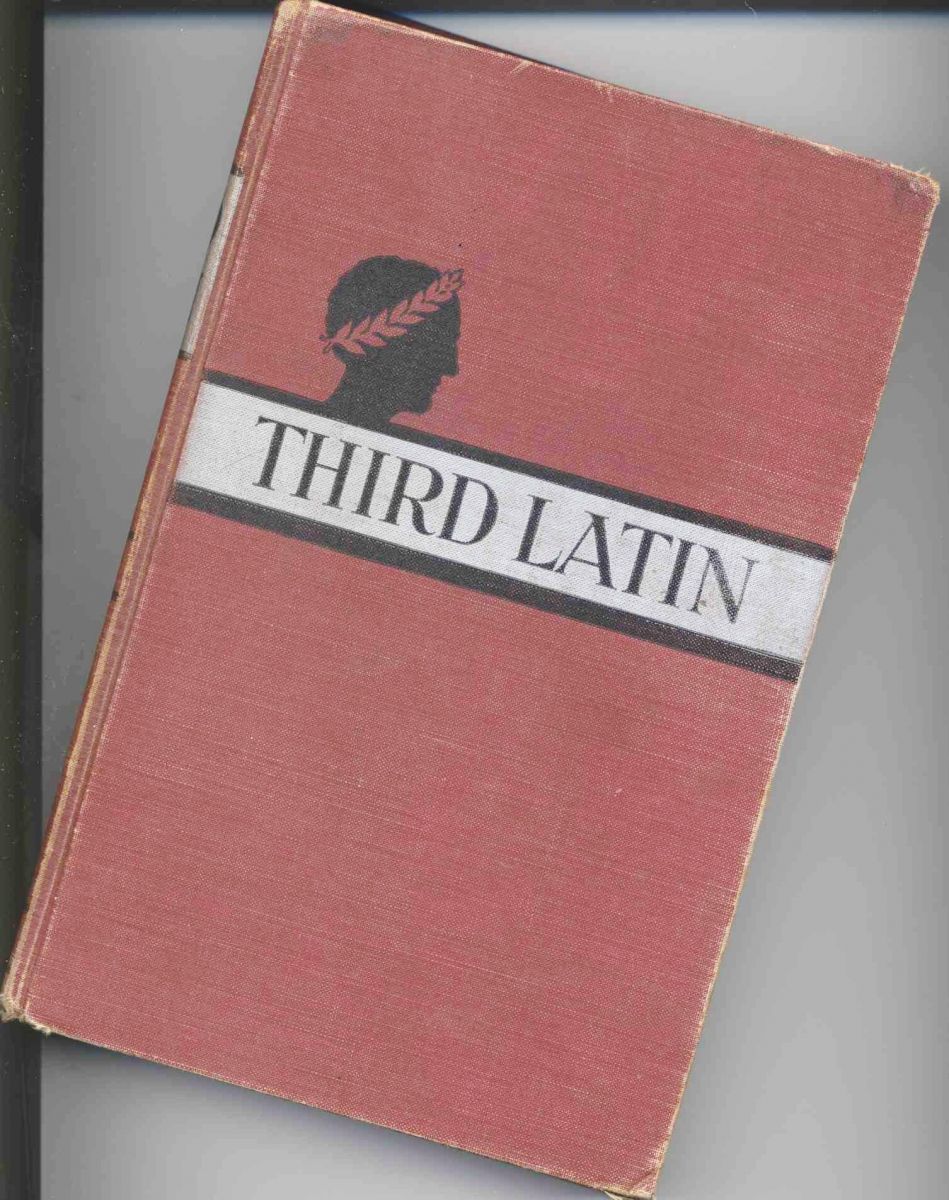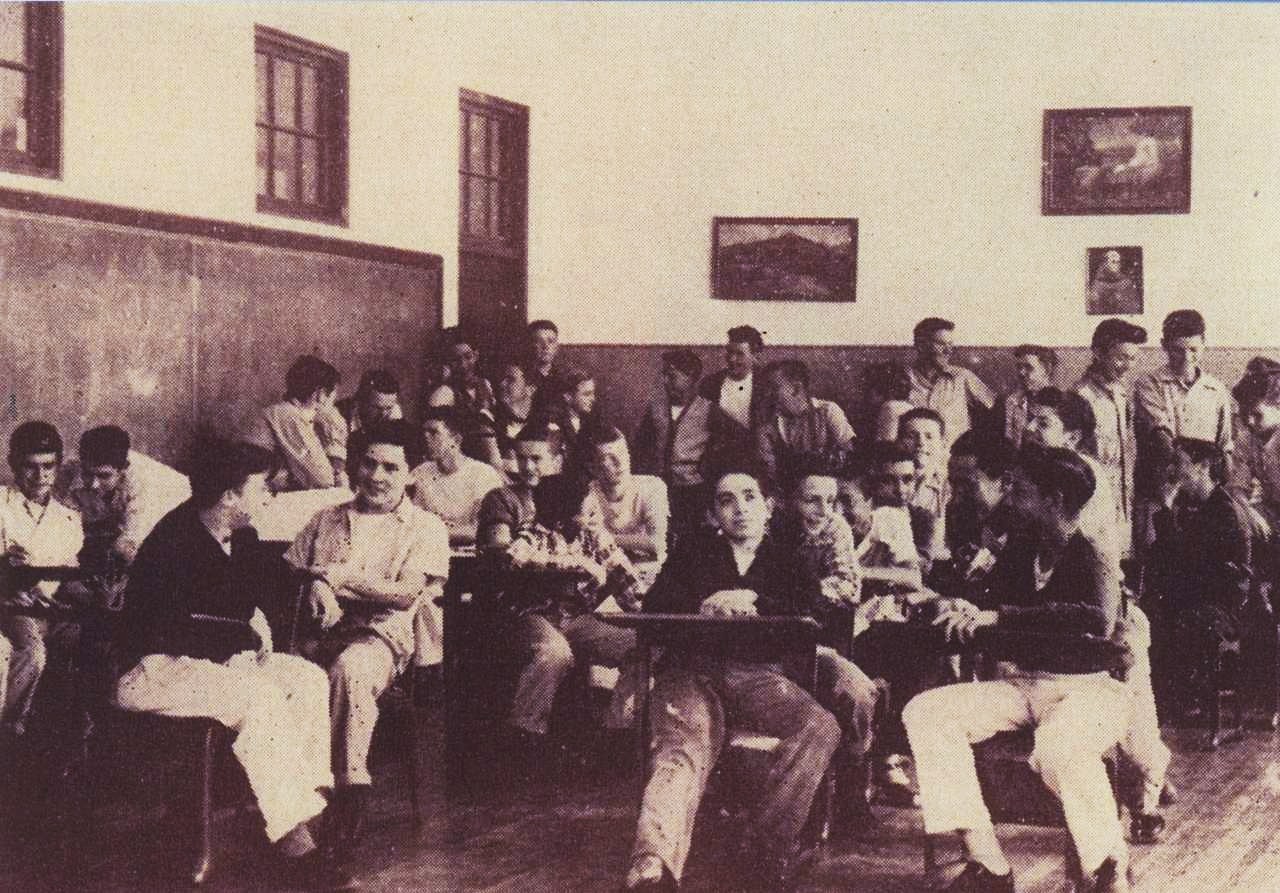Note: this description is from St. Anthony's Student Catalogues of the 1950s, and '60s. (The 70s and 80s were similar, but no Latin.) In the 1950s Spanish I and Biology were part of the Sophomore Course and the Junior Course contained an Algebra II and the History III shown here. Students attended classes Monday through Saturday, but with half-days on Wednesdays and Saturdays, leaving the afternoons open for free time and/or sports!
 Freshman Course
Freshman Course
Latin I Mastery through drill of the declensions and conjugations; reading for beginners; 800 word vocabulary.
Religion I Liturgical traditions, altar serving, catechism, and religious virtues.
English I Basic grammar and composition; selected reading for appreciation.
Algebra I Fundamental mathematical processes as applied to an expanded number system, including negative integers, literal numbers, rational numbers, powers and roots.
History I Franciscan History. California History: from aboriginal era to modern times. Second Semester: American History I.
Music I Basic musical components; instruments; composers; types of music. Emphasis on appreciation, listening to recorded classical pieces on 33 rpm albums and on reel to reel tapes.
Speech I Basic skills in dramatic and poetic readings and presentations.
Art I Basic elements of art: color and design; survey of paintings and their artists.
Spanish I Basic vocabulary and grammar; directed dialog and directed oral composition; limited reading and writing. (Some years Spanish 1 was in Sophomore year.)
 Sophomore Course
Sophomore Course
Latin II Inflection and syntax of nouns, pronouns, adjectives and verbs. Drill in high frequency Latin constructions.
Traditional readings from classical mythology for translation purposes, i.e. Jason and the Argonauts.
Religion II Old Testament, the 10 Commandments; ethics; applied morality.
English II Advanced grammar and composition; readings for class discussion and analysis.
Algebra II A continuation of Algebra I; advanced principles.
Geometry Basic elements of plane geometry; preparation for logical reasoning through mathematical reasoning.
Spanish II (Or sometimes Spanish 1) Advanced grammar; graded readings, frequent compositions and conversation.
Music II Continuation of Music I: appreciation of musical types, choral singing.
Speech II Basic skills in extemporaneous speaking, as well as theatrical skills.
Art II Survey and appreciation of sculpture, and the sculptors, continuation of Art History II
History II American History continued from previous course.
 Junior Course
Junior Course
Latin III Caesar's Gallic Wars and selections from church authors - for translation purposes.
Training in classical sentence structure, particularly subordinate phrases and clauses. Graves Latin was the textbook. (shown here)
Religion III New Testament, Life of Christ.
English III Historical development of American literature through types of writing and through the evolution of ideas
as reflected in representative works. A thorough study of creative writing, with special emphasis on development of an individual style.
Advanced grammar.
Biology (Laboratory science) Fundamentals of biology with applied laboratory studies. Bird study. Fruit fly experiments.
History III World History: basic movements in political, economic and social history from ancient times to modern times.
Music III Gregorian Chant; notation and applied chants. Basics of a variety of instruments.
Speech III Formal public speaking.
Art III Survey and appreciation of architecture- Roman, Greek, Classical, modern.
Spanish III Readings from representative Hispanic-American writers, which provide a source for discussion of cultural
and literary content as well as applied grammar.
Greek I (Some years Greek 1 was a Senior course.) Basic grammar and vocabulary; selected readings from the New Testament.
 Senior Course
Senior Course
Latin IV Selections from Cicero and Vergil's Aeneid. Weekly translation from church authors and modern Latin in writings.
(Contribute to "Aquilifer" Latin Newspaper during a few years in the 1960s)
Religion IV Study of the Catholic Catechism / Apologetics.
English IV Review of grammar, and a study of rhetoric - correlated with advanced writing course. Study of the history of English literature;
main periods, principal authors, significant works, reading and discussion of important selections.
Physics (Laboratory science) Fundamentals of physical laws; applied laboratory experiments.
Music IV Continuation of Music III, Appreciation of Classical composers.
Speech IV Review of I, II, III and basic homiletics.
History IV Civics: U.S. Government, U.S. Constitution, Amendments, Branches, and how each works.
Spanish IV Full review of Spanish I, II, III, and practical imersion with Spanish as a first language.
Greek II Advanced grammar; selected readings from the New Testament and from classical authors.
SUPERVISED STUDY is required daily: fifty minutes in the morning; and an hour and fifteen minutes in the afternoon; an hour and a half in the evening after supper.
